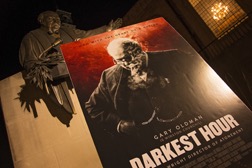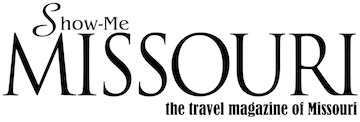A Light In The Dark
February 2018

Strong bonds connect William Shakespeare to Missouri.
A self-styled Shakespearean actor, Frank James quoted the Bard during a train robbery at Gads Hill, Missouri. The well-read James may have favored a scene in Henry IV Part I—featuring the fat-kidneyed Falstaff and a gang of highwaymen on the Road by Gads Hill—because it fit Frank’s disdain for fusty fat cats who rode the rails.
Across the pond from Hamlet’s Elsinore, one of Missouri’s central characters trod the boards in a life worthy of Shakespeare. Mel Carnahan, born in Ellsinore, Missouri, became governor until his untimely death in a plane crash, which also killed his son, Randy, and his chief aide Chris Sifford.
Shakespeare would have loved to create the character Winston Churchill, whose speech on the campus of Fulton’s Westminster College set in motion the American visual of the cold war, which consumed the attention of an octet of presidents, including Ronald Reagan, who starred in King’s Row, an Oscar-nominated movie loosely based on Fulton characters.
Recently Oscar buzz filled the air at Fulton’s Church of St. Mary the Virgin, Aldermanbury, dressed up to host the red carpet debut of “Darkest Hour,” an intimate peek into Winston Churchill’s mind as he faced the menace of Adolf Hitler’s Nazi aggression.
The film is a tour de force by actor Gary Oldman as Churchill, a riveting study of the many sides of Churchill, and the camera rarely strays from him as he transforms from a doubt-ridden has-been into Britain’s leader against tyranny, repeating the now-familiar mantra, “Never give up.”
This personal glimpse of Churchill by director Joe Wright is not an action adventure film. Star Wars junkies may squirm in their seats, hoping for more pyrotechnics. But it’s a good thing Oldman didn’t squirm during his hours in the makeup chair, transforming him into one of the greatest historical figures of any time. Oldman captures Churchill’s deeply conflicting moods during Britain’s struggle with its own resolve at the beginning of the war. Oldman becomes Churchill: his depression, his humor, his voice and mannerisms as he spars with Parliament, King George V and his own family while wrestling with the impending catastrophe at Dunkirk.
Like a fine wine, this movie pairs well with Dunkirk, the movie about England’s dramatic civilian armada that braved the English Channel to rescue 300,000 British soldiers from certain death at the hands of Hitler. It’s interesting that both movies came out within months of each other.
The Museum
The old church was built nearly 900 years ago in the middle of London. Sir Christopher Wren redesigned the chapel after the 1666 Great Fire of London gutted its interior. The blitzkriegs of 1941 damaged the old church again. But it survived enough that in the mother of all pilgrimages, loving hands picked up the church, stone by stone, jumped the pond and plopped it down in Fulton.
That story, itself, deserves acclaim. Churchill had visited Fulton’s Westminster College in 1946, and delivered a speech titled “Sinews of Peace,” better remembered as the Iron Curtain speech. In a bold move to forever link Churchill and Fulton, Westminster College in the early-1960s “settled on the rather more ambitious notion of moving a Christopher Wren designed Church from London,” according to museum officials.
Beneath the church is the National Churchill Museum which, “through the imaginative and innovative use of technology, brings to life the story of Winston Churchill and the world he knew.” This collection of fascinating displays and artifacts, along with its programs and events, was formally designated by Congress as America’s National Churchill Museum.
Before the old church made its big leap, before the tragic fire and the awful bombs, this was the church where William Shakespeare prayed for good reviews.
Darkest Hour is a plot worthy of Shakespeare. And the movie and museum are worthy of your time.
John Robinson is the author of two books and is working on a third, “300001, A Road Odyssey.”
